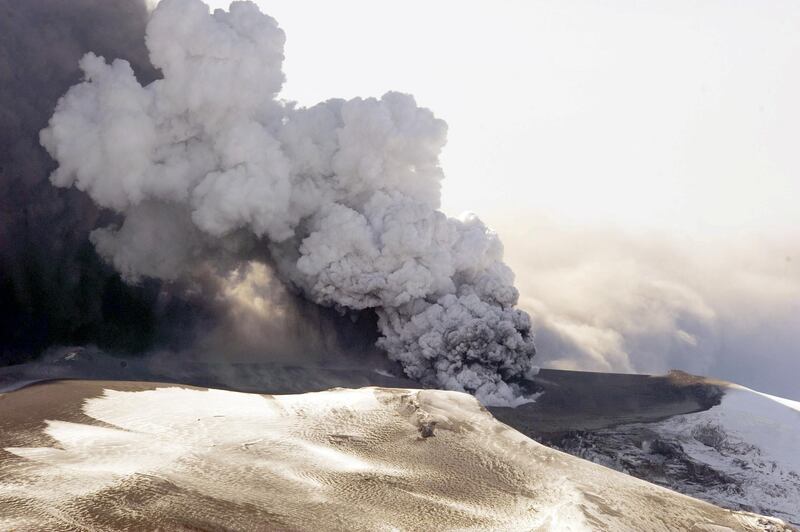If your 2018 hasn't been up to scratch, then count yourself lucky you didn't live to see 536 CE.
Any gripes about modern life pale into comparison when set against a brutal onslaught of volcanic eruptions and mass starvation, with an outbreak of bubonic plague thrown in for good measure.
It is the worst year in history, according to scientists who have analysed the 12 months of utter turmoil.
Now the culprit for a bad year that turned into an even worse century can be revealed, a spewing volcano in Iceland.
According to a new study in the journal Antiquity, it ushered in an era of unprecedented misery.
In the spring of that year, the planet entered a period of global calamities which must have convinced many The End was near – not least because it was.
One eye-witness in the city of Byzantium described how it started: “The sun gave forth its light without brightness, like the moon, during this whole year”.
It started with a volcanic eruption in Iceland which threw billions of tonnes of dust and debris into the atmosphere, bouncing the sun’s light and heat back into space.
The resulting global cooling had devastating effects across the planet. Historical accounts report crop failures from Britain and Scandinavia to Mesopotamia and China. Starvation was rife.
Those who survived then faced another calamity: a pandemic of bubonic plague which spread across the Mediterranean and claimed between 25 to 50 million lives – around 1 in 5 of the world’s population at that time.
Incredibly, even this was not the end. By analysing dust trapped in ice-cores at sites around the world, scientists believe several other volcanic eruptions took place, including one in modern-day El Salvador estimated to have hurled 100 billion tonnes of dust into the atmosphere.
Only now is it becoming clear just how resilient our forebears were in the face of these multiple calamities.
The evidence comes from an ice core extracted from a glacier in the Swiss Alps. Over 70 metres long, it has given scientists unprecedented insight into how humanity has coped with what nature has thrown at us over the last 2,000 years.
_______________
Read more from Science:
Elephant in the room: are animals far cleverer than humans like to think?
New technology set to revolutionise keeping buildings cool
Why more couples are choosing pets over children — and the impact if could have on their health
_______________
Using a laser to create ice slices barely a hair’s breadth wide, a team led by Professor Christopher Loveluck of the University of Nottingham, UK, have developed a means of releasing the air trapped in the core when it blew over the glacier in each year over two millennia.
They have found specks of volcanic debris from the volcanic eruptions of 1,500 years ago, confirming the view that they triggered the original calamity of 536.
And they have also found something else: levels of lead consistent with metal-smelting from ancient coin-making factories.
As such, the ice-core has given them the archaeological equivalent of a stock market index able to chart the ebb and flow of ancient economies.
Prof Loveluck and his colleagues found a sharp peak in the amount of lead trapped in the ice core around the year 640, and another around 20 years later.
Economic demand had reached the point where more coins were needed – suggesting Europe at least was finally emerging from its near-death experience that had lasted an entire century.
As the ice-core shows, humanity has had to face many other calamities. The team found that lead levels plunged again during the mid-14th century – coinciding with the “Black Death”, the return of the bubonic plague which claimed around 20 per cent of the global population.
This new technique provides a new window on the past. But inevitably it also raises questions about what our future holds.
Natural calamities are just as common as they ever were. Some would claim they are becoming more prevalent because of climate change.
We are better at protecting ourselves from some of the old scourges. Vaccination, antibiotics and global health surveillance have stopped pandemics in their tracks. One mass killer – smallpox – has been eradicated. Mass starvation is no longer the threat it was. Even wars are less prevalent than they were.
But the disturbing truth is that we have no more ability to prevent catastrophic volcanic eruptions than the denizens of the Dark Ages. If several strike at the same time, the effects would still be catastrophic . And the laws of probability mean that such a calamity is all but guaranteed to happen – one day.






